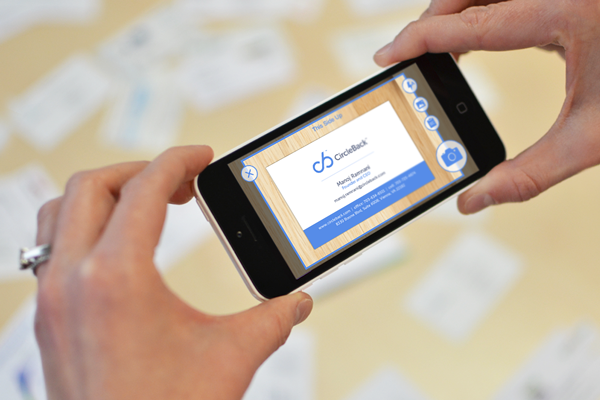OCR has come a long way. Originating 100 years ago as a crude device to read and “speak” written texts to the blind, OCR (optical character recognition) has been imagined and reimagined to various (many not-quite-successful) results. While clearly a good idea in theory (after all, people have pursued it for a century), most iterations for mobile devices of the technology were garbage up until 2007. We’ve all used first-generation business card scanners, and have seen hieroglyphics spit out instead of contacts. This might have been exciting for Egyptian archeologists, but not anyone else.
Luckily, like the iPhone camera, the wireless data network, and all the other useful technology out there, OCR technology has been developing rapidly. Nowadays, business card scanners use what’s called “Application-Oriented OCR” which has been specifically designed for scanning business cards. The realization that OCR technology really wasn’t one-size-fits-all has dramatically increased accuracy and efficiency. Or, to put it another way:
Mobile OCR technology used to work like this: scan 5 business cards, get back a bunch of cryptograms that don’t in any way resemble the contacts (due to font discrepancies or some other inability to accurately read/convert the scans into text), spend 5-7 minutes editing and correcting the card imports, delete the app thinking to yourself clearly this was much better in theory.
Today, it works a bit more like this: scan 5 business cards; 2 are perfectly transcribed, 2 contain minor (1-2 character) errors that are correctable in seconds; and 1 is returned in the expected (and ever-frustrating) hieroglyphics. However, upon rescanning the 1 failed transcription, 50% of the time, you receive a perfect business card. Otherwise, worst-case-scenario, you end up manually inputting 1 of 5 business cards.
Whatever the outcome, your card-scanning, contact-importing productivity increases by at least 80%. And, what’s more, the average business card-scanning app today comes with a host of other features: the ability to connect with the contact on Linked In without leaving the app, to send a follow-up email, or to add to your phone’s native address book. ScanBizCards now has the added ability to schedule future follow-ups onto your phone’s calendar, and to automatically export contacts to Salesforce.com or other popular CRM systems like SugarCRM.
But before you throw yourself into the first business card scanning app you find in the app store, you need to understand the distinction between OCR and data transcription, the two types of business card scanning services. OCR is a digital scanning and data-mining app using pattern-recognition algorithms to “decode” scans made of a business card. Employing enormous font-libraries to fight against error, OCR scanners produce near-immediate contact entries that tend to be as accurate as I’ve described above, perhaps even a little more so (up to 95% for SBC).
Data transcription apps, on the other hand, work a bit differently. They too employ basic scanning technology but, rather than initiating an algorithm-driven data mine, these apps send off the scanned pictures—usually to India, South America, or Eastern Europe—for human transcription. Once transcribed (it can take anywhere from 10-60 minutes), the contact information is then pushed back into the app where you can view it.
Since the days of the janky OCR scanning software, data transcription software has been viewed as preferable, the thinking being that human error couldn’t possibly be as bad as algorithmic error. After all, there is a person doing the action. However, there are two aspects of transcription that must be considered. First, the vast majority of data transcriptionists either do not speak English or do not speak English as a first language. Also, the workers are forever being driven by market realities to transcribe more cards per hour for less money, producing more errors. When compared against current OCR accuracies, data transcription-driven business card scanners are commonly less accurate than their OCR counterparts.
Further, many businesses have turned away from data transcription-driver scanners for security reasons. Because many contacts are private (and some very privileged), some users are uncomfortable outsourcing contact information to non-verified third parties as they are unable to control who sees the contact information or has the ability to use it for other purposes. While data transcription may have, in the era of gibberish-spewing OCR scanners, been the lesser of two evils, today’s world of technological advancement and increased concern for information security has brought about, necessitated even, the need for an all-digital, all-algorithmic, instant and secure OCR scanner technology. Fortunately, it’s here.
While admittedly not perfect, current mobile OCR technology is good enough. With up to 95% data-accuracy, a host of other features used to help you more seamlessly integrate your new contacts into your network, and a guaranteed secure, instant conversion of your business card to a digital contact, it seems that OCR will lead the way in the next generation of business card scanners.
Do you have a favorite business card scanning app? A funny story about an old-school OCR “translation?” Share it with us in the comments section!

